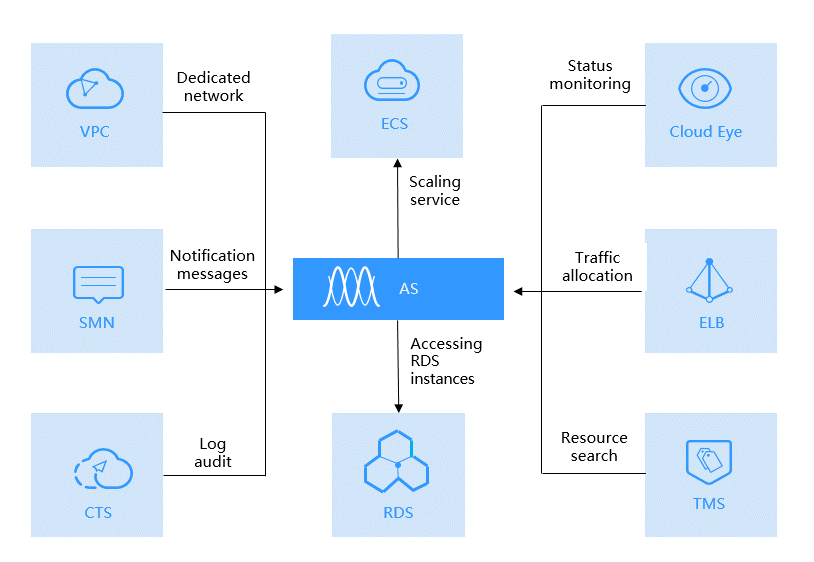AS and Other Services
AS can work with other cloud services to meet your requirements for different scenarios.
Figure 1 shows the relationships between AS and other services.
Figure 1 Relationships between AS and other services

Service | Description | Interaction | Reference |
|---|---|---|---|
Elastic Load Balance (ELB) | After ELB is configured, AS automatically associates ECS instances to a load balancer listener when adding ECSs, and unbinds them when removing the instances. For AS to work with ELB, the AS group and load balancer must be in the same VPC. | ELB distributes traffic to all ECSs in an AS group. | |
Cloud Eye | If an alarm-triggered policy is configured, AS triggers scaling actions when an alarm condition specified in Cloud Eye is met. | AS scales resources based on ECS instance status monitored by Cloud Eye. | |
ECS | ECS instances added in a scaling action can be managed and maintained on the ECS console. | AS automatically adjusts the number of ECS instances. | |
Virtual Private Cloud (VPC) | AS automatically adjusts the bandwidths of EIPs assigned in VPCs and also shared bandwidths. | AS automatically adjusts the bandwidth. | |
Simple Message Notification (SMN) | If you enable the SMN service, the system sends you notifications about the status of your AS group in a timely manner. | Message notification | |
Cloud Trace Service (CTS) | With CTS, you can record AS operation logs for viewing, auditing, and backtracking. | Log audit | |
Tag Management Service (TMS) | If you have multiple resources of the same type, TMS enables you to manage these resources more easily. | Tags | |
Relational Database Service (RDS) | The prerequisites for directly accessing an RDS DB instance from a scaled instance are as follows:
| The scaled instances can access RDS DB instances. | Connecting to an MySQL DB Instance Through a Private Network |